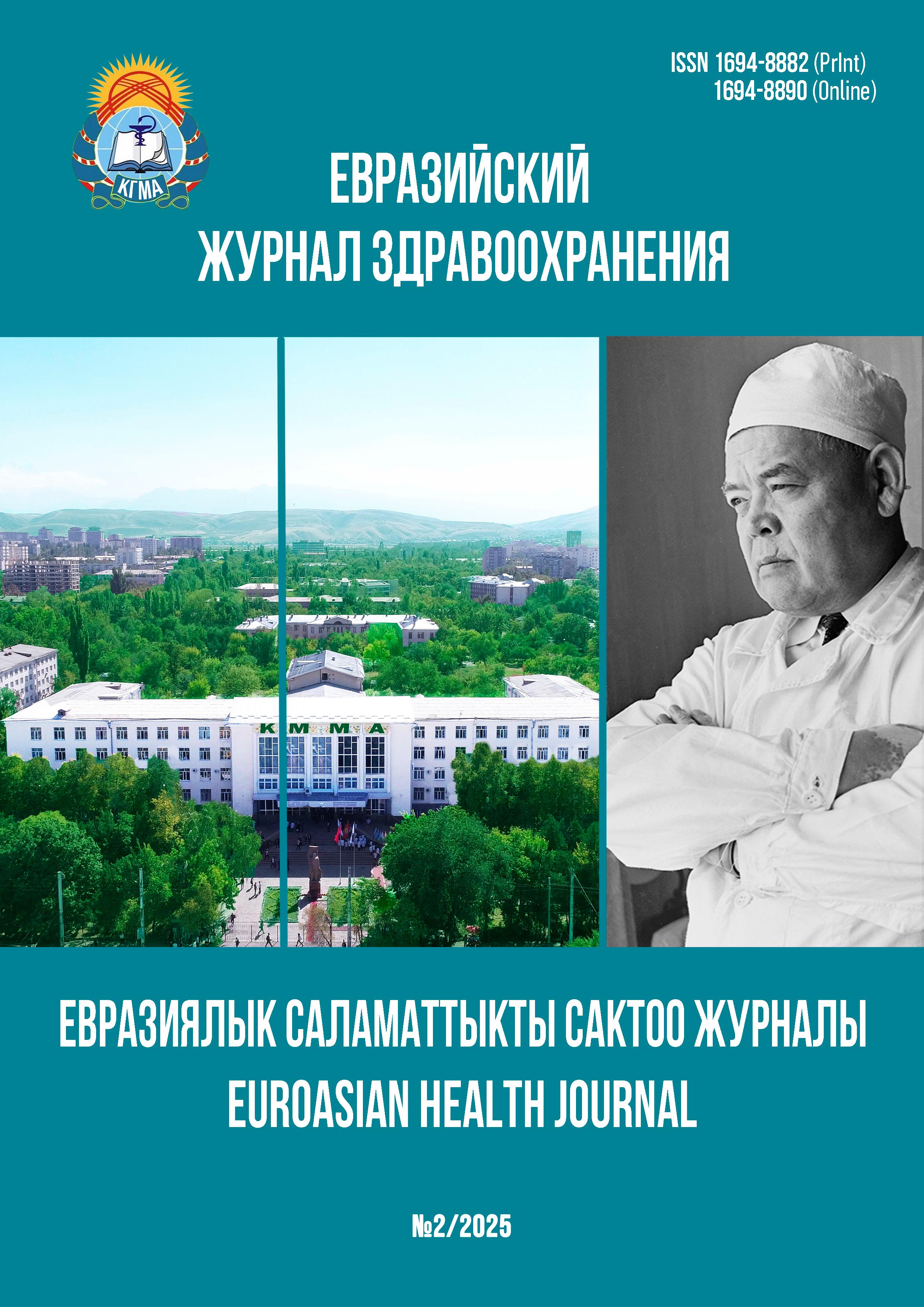К ВОПРОСУ О ЛЕЧЕНИИ ТИННИТУСА
DOI:
https://doi.org/10.54890/1694-8882-2025-2-116Аннотация
Тиннитус – восприятие звука при отсутствии фактического внешнего звука – представляет собой симптом основного состояния, а не отдельного заболевания. Его проявления часто сопровождаются неврологическими, а также сосудистыми изменениями. И, к сожалению, шум в ушах может существенно сказываться на качестве жизни пациента, затрудняя и социальное взаимодействие, и трудовую деятельность. По данным шести больших популяционных исследований, в различных странах частота встречаемости тиннитуса среди взрослых варьирует от 4,4 до 15,1% и от 7,6 до 20,1% в возрастной группе старше 50 лет. Также большая часть этих пациентов склонна эмоционально окрашивать свой ушной шум, в связи с чем характеристики и степень его влияния на качество жизни очень индивидуальны. Лечение тиннитуса включает фармакотерапию, когнитивную и поведенческую терапию, звуковую терапию, музыкальную терапию, терапию переобучения тиннитуса, массаж и растяжку, а также электрическое подавление. Несмотря на распространенность проблемы, вопрос об этиологии и патогенезе тиннитуса на настоящий момент полностью не изучен. Поиск новых методов лечения направлен не только на улучшение звукового восприятия, но и на устранение сопутствующего шума, который может доставлять человеку невыносимые страдания. В данной работе авторы постарались рассмотреть характеристики, причины, механизмы и методы лечения тиннитуса.
Ключевые слова:
шум в ушах, слух, пациент, центральная нервная система, лечениеБиблиографические ссылки
1. Кузовков В.Е., Мегрелишвили С.М., Щербаков Я.Л. Шум в ушах: методы его коррекции. Современное состояние вопроса. Российская оториноларингология. 2012;5(66):114-118.
2. Гуненков А.В., Косяков С.Я. Субъективный ушной шум. Современные представления о лечении. Вестник оториноларингологии. 2014;3:72–75.
3. Coelho CB, Sanchez TG, Tyler RS. Tinnitus in children and associ ated risk factors. Prog Brain Res. 2007;166:179–191. https://doi.org/10.1016/S0079-6123(07)66016-6
4. Dobie RA. Overview: suffering from tinnitus. In: Snow JB, editor. Tinnitus: theory and management. Ontario: BC Decker Inc;
5. Шелеско Е.В., Черникова Н.А., Фомочкина Л.А., Лебедева М.А., Никонова С.Д., Доронина В.А. и др. Принципы диагностики и лечения шума в ушах. Журнал неврологии и психиатрии. 2021;121(11):99-105. https://doi.org/10.17116/jnevro202112111199
6. Tyler RS. Neurophysiological models, psychological models, and treatments for tinnitus. In: Tyler RS, editor. Tinnitus treatment. New York: Thieme; 2006:1–22.
7. Гуненков А.В., Косяков С.В., Пчеленок Е.В. Лечение шума в ушах. Российский неврологический журнал. 2020;25(1):52-55. https://doi.org/10.30629/2658-7947-2020-25-1-52-55
8. Левина Е.А., Левин С.В., Дворянчиков В.В., Кузовков В.Е. Звуковая терапия при лечении шума в ушах. Медицинский совет. 2024;18:140-148. https://doi.org/10.21518/ms2024-484
9. Савранская К.В., Рыжкова Н.С., Бакотина А.В., Костюк В.Н. Соматосенсорный тиннитус. Эффективная фармакотерапия. 2024;20(3):56–59. https://doi.org/10.33978/2307-3586-2024-20-3-56-59
10. Владимирова Т.Ю., Айзенштадт Л.В., Шелыхманова М.В. Комплексный подход к лечению тиннитуса у пациентов старшей возрастной группы. Российская оториноларингология. 2023;22(3):32-39. https://doi.org/10.18692/ 1810-4800-2023-3-32-39
11. Wang Y, Zhan G, Cai Z, Jiao B, Zhao Y, Li S, et al. Vagus nerve stimulation in brain diseases: therapeutic application and biological mechanisms. Neurosci Biobehav Rev. 2021;127:37-53. https://doi.org/10.1016/j.neubiorev.2021.04.018
12. Kaan EA, De Aguiar I, Clarke C, Lamb DG. A transcutaneous vagus nerve stimulation study on verbal order memory. Journal of Neurolinguistics. 2021;59(1):100990. https://doi.org/10.1016/j.jneuroling.2021.100990
13. Владимирова Т.Ю. Айзенштадт Л.В. Оценка приверженности к лечению тугоухости у пациентов старческого возраста. Клиническая больница. 2017;4(22):17-21.
14. Azevedo AA, Figueiredo RR. Tinnitus treatment with acamprosate: double-blind study. Braz J Otorrinolaringol. 2005;71(5):618–623. https://doi.org/10.1016/ s1808-8694(15)31266-0
15. Иаева Т.А., Исмаилова А.А., Беднякова Н.Н. Особенности лечения тиннитуса при слухопротезировании пациентов с сенсоневральной тугоухостью. Вестник КРСУ. 2022;22(9):41-44. https://doi.org/10.36979/1694-500X-2022-22-9-41-44
16. Сасызбаева Г.Е., Каликан Ж.К., Абдихамит К.О. и соавт. Актуальные подходы в терапии тиннитуса. Клиническая медицина и фармакология. 2024;6 (257):128-134.
17. Andersson G, Kaldo V. Cognitive-behavioral therapy with applied relaxation. In: Tyler RS, editor. Tinnitus treatment. New York: Thieme; 2006:96–115.
18. Насыров В.А., Иаева Т.А., Исламов И.М. Практическое руководство по аудиологии. Бишкек. 2014:110-112.
9. Searchfield GD. Hearing aids and tinnitus. In: Tyler RS, editor. Tinnitus treatment. New York: Thieme; 2006:161–175.
20. Изаева Т.А., Исмаилова А.А., Беднякова Н.Н, Турумбекова А.Б. Диагностические критерии и способы лечения кохлеарных и вестибулярных расстройств. Бишкек; 2022. 120 с.
21. Herraiz A, Toledano A, Diges I. Trans-electrical nerve stimulation (TENS) of somatic tinnitus. Prog Brain Res. 2007;166:389–394. https://doi.org/10.1016/S0079-6123(07)66037-3







